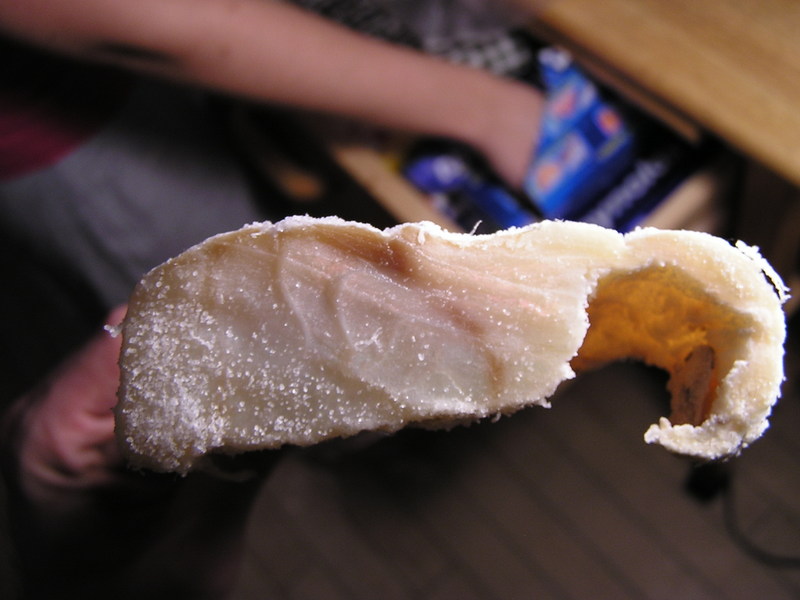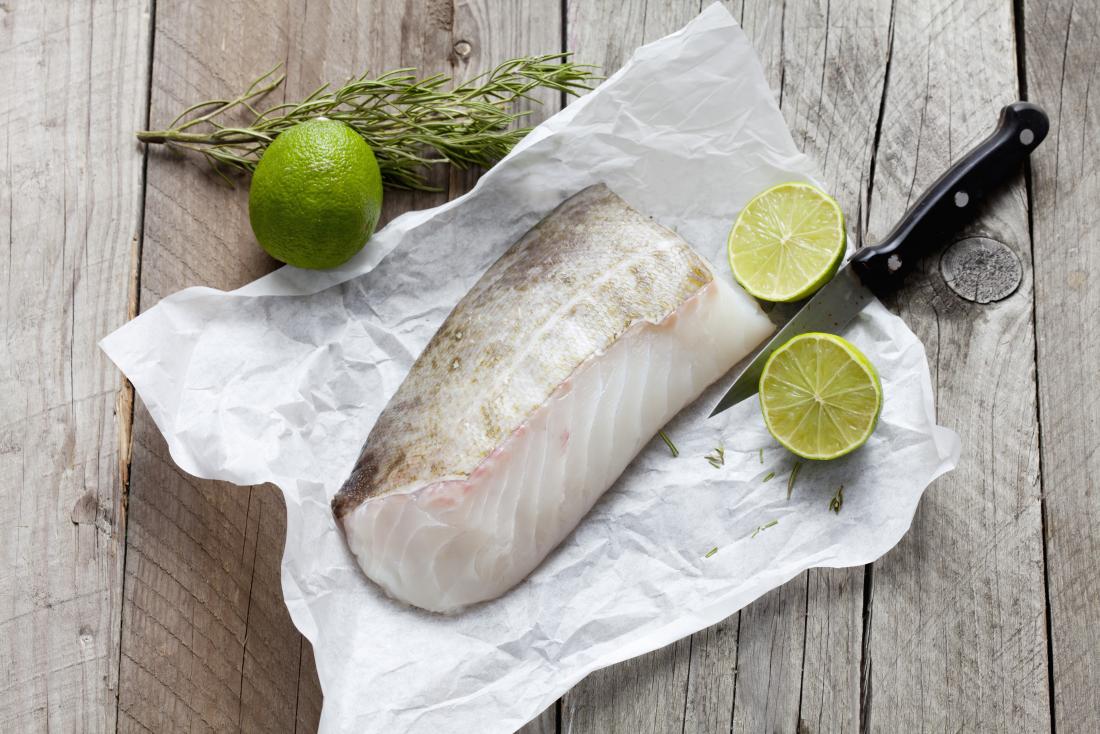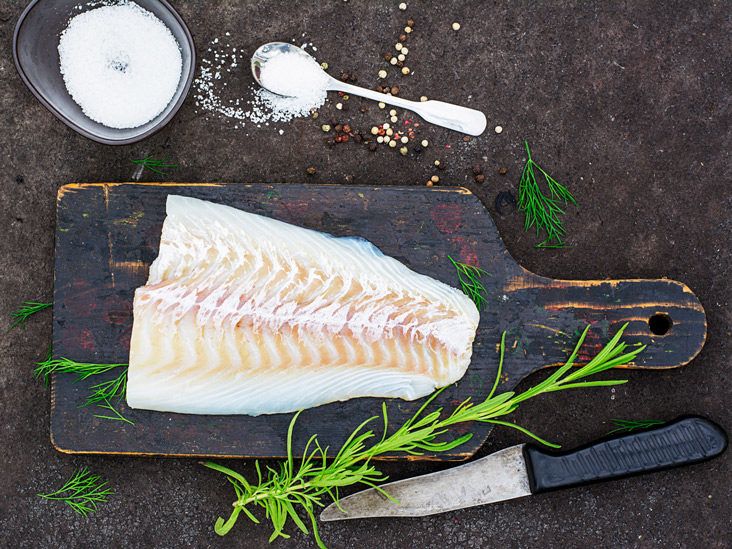Introduction

Consuming raw fish has become increasingly popular in recent years, with sushi and sashimi gaining popularity worldwide. However, not all fish are suitable for raw consumption. Cod, a popular fish known for its mild flavor and flaky texture, is often questioned in terms of its suitability for raw consumption. This article aims to provide a comprehensive understanding of whether it is safe to eat raw cod, considering both the nutritional aspects and potential health risks. By evaluating the facts, myths, and proper handling of raw cod, individuals can make informed decisions regarding their consumption choices.
Background Information On Consuming Raw Fish
Consuming raw fish has been a culinary tradition in many cultures for centuries. It originated in Japan with dishes like sushi and sashimi. Raw fish is revered for its delicate texture, freshness, and unique flavor profiles. However, it is essential to note that not all fish are safe to eat raw. Some species may harbor parasites or harmful bacteria that can cause foodborne illnesses. Therefore, it is crucial to understand the specific requirements and guidelines for safely consuming raw fish to minimize the risk of any potential health hazards.
Health Considerations And Potential Risks
When it comes to consuming raw fish, including cod, there are some health considerations and potential risks to be aware of. Raw fish may contain parasites or harmful bacteria that can cause foodborne illnesses, such as diarrhea, abdominal pain, and muscle pain. However, these risks can be minimized by properly handling and preparing the fish, such as freezing it beforehand. It is also crucial to source the fish from reputable and trusted suppliers to ensure its freshness and safety. By following these guidelines, you can enjoy cod without compromising your health.
What Is Cod?

Cod is a popular fish species that is widely consumed in many parts of the world. Specifically, Atlantic cod (Gadus morhua) is the type of cod commonly eaten in the United Kingdom and other regions. It is primarily caught in the cold waters of the North Atlantic. Cod is known for its firm, white flesh and mild flavor, making it a versatile ingredient in various dishes. This fish is also highly nutritious, packed with essential nutrients such as protein, omega-3 fatty acids, vitamins, and minerals. Its popularity and nutritional benefits make cod a sought-after choice for seafood lovers.
Overview Of Cod As A Fish Species
Cod is a well-known fish species found in the cold waters of the North Atlantic. It belongs to the Gadidae family and is commonly known as Atlantic cod (Gadus morhua). This fish has a streamlined body and can reach lengths of up to 1.8 meters. It is characterized by its olive-green or brownish color on the back and a pale belly. Cod is a highly sought-after fish due to its firm, white flesh and mild flavor. It is also known for its versatility in cooking, making it a popular choice for various dishes such as fish and chips, fish stews, and pan-seared cod fillets.
Nutritional Value Of Cod
Cod is a highly nutritious fish that offers several health benefits. It is a low-fat source of protein, making it an excellent choice for those seeking to reduce their fat intake. Additionally, cod is rich in omega-3 fatty acids, which are essential for heart health and brain function. It also provides choline, a nutrient important for liver function and brain development. Cod contains iodine, a mineral necessary for thyroid health and metabolism regulation. With its abundance of essential nutrients, adding cod to your diet can contribute to overall well-being and optimal health.
Can You Eat Cod Raw?

Can You Eat Cod Raw?:
Contrary to popular belief, it is not recommended to eat raw cod. Raw cod may contain bacteria and parasites that can cause foodborne illnesses, such as salmonella and anisakiasis. These risks can be mitigated by cooking the cod properly. Cooking the cod ensures that any harmful bacteria or parasites are destroyed, making it safe for consumption. Therefore, it is advised to cook cod thoroughly before consuming it to reduce the risk of foodborne illnesses and to ensure optimal safety and enjoyment of this nutritious fish.
Debunking Myths And Misconceptions
There are several myths and misconceptions surrounding the consumption of raw cod. It is important to debunk these misconceptions to ensure accurate information. Here are some common myths about eating raw cod that need to be clarified:
- Myth: Raw cod is safe to eat.
Reality: Contrary to popular belief, it is not recommended to eat raw cod. Raw cod may contain bacteria and parasites that can cause foodborne illnesses.
- Myth: All fish can be eaten raw.
Reality: While some types of fish can be consumed raw, such as sushi-grade fish, cod is not one of them. Raw cod can pose health risks if not properly cooked.
It is crucial to ensure that cod is thoroughly cooked to eliminate any potential health hazards and to enjoy its nutritious benefits safely.
Factors To Consider Before Consuming Raw Cod
Before consuming raw Cod, there are several important factors to consider.
- Fish quality: Ensure that the Cod is fresh, sourced from reputable suppliers, and stored properly to minimize the risk of contamination.
- Parasite prevention: Freezing the Cod at temperatures below -4°F (-20°C) for at least 7 days can kill any potential parasites in the fish.
- Allergies: Check for any allergies to fish or seafood before consuming raw Cod.
- Personal health: Individuals with compromised immune systems or certain medical conditions should avoid consuming raw Cod.
- Proper handling: Follow proper food safety practices, such as washing hands, clean utensils, and avoiding cross-contamination, to reduce the risk of foodborne illnesses.
Health Risks Associated With Consuming Raw Cod

Consuming raw Cod poses several health risks that need to be taken into consideration. One of the main concerns is the potential presence of parasites, specifically a type of roundworm known as Anisakis. These parasites can cause anisakiasis, a parasitic infection that can lead to symptoms such as abdominal pain, nausea, vomiting, and diarrhea. In rare cases, anisakiasis can even result in severe complications requiring medical intervention. Proper freezing of the Cod at temperatures below -4°F (-20°C) for at least 7 days can help kill any parasites, making it safer for consumption. It is important to follow proper handling and preparation techniques to minimize the risk of foodborne illnesses.
Potential Dangers And Foodborne Illnesses
Consuming raw Cod can pose potential dangers and increase the risk of foodborne illnesses. The main concern is the presence of parasites, such as the Anisakis roundworm. These parasites can cause anisakiasis, a parasitic infection that can lead to symptoms like abdominal pain, nausea, vomiting, and diarrhea. In rare cases, it can even result in severe complications requiring medical intervention. Additionally, bacteria like Salmonella and Vibrio can also be present in raw Cod, causing food poisoning. Proper handling, freezing, and cooking techniques are crucial in minimizing the risk of these infections. [19] [20]
Proper Handling And Preparation To Minimize Risks
To reduce the risk of foodborne illnesses when consuming raw Cod, proper handling and preparation techniques are essential. Here are some guidelines to minimize risks:
- Source fresh and reputable seafood suppliers to ensure quality and safety.
- Store raw Cod at a temperature below 41°F (5°C) to slow bacterial growth.
- Thoroughly rinse the fish under cold water to remove any surface contaminants.
- Use clean utensils and cutting boards to prevent cross-contamination with other foods.
- Freezing the fish at -4°F (-20°C) for at least seven days can kill parasites.
- If consuming raw Cod, it is recommended to use high-quality sushi-grade fish to ensure safety.
Remember, it’s always best to consult with a healthcare professional or knowledgeable chef before consuming raw seafood. [22]
Alternative Ways To Enjoy Cod

There are numerous delicious and safe ways to enjoy Cod without consuming it raw. Here are some alternative cooking methods for Cod:
- Grilling: Grilling Cod fillets imparts a smoky flavor and creates a crispy exterior.
- Baking: Baking Cod with herbs, lemon, and butter results in a tender and flavorful dish.
- Pan-frying: Pan-frying Cod in a skillet with a little oil creates a crispy crust while preserving its moistness.
- Poaching: Poaching Cod in simmering liquid, such as broth or wine, produces a delicate and moist texture.
- Steaming: Steaming Cod fillets retains its natural flavors and nutrients while keeping it moist.
With these cooking methods, you can enjoy the delectable taste of Cod while ensuring its safety.
Cooking Methods For Cod
There are numerous delicious and safe ways to enjoy Cod without consuming it raw. Here are some alternative cooking methods for Cod:
- Grilling: Grilling Cod fillets imparts a smoky flavor and creates a crispy exterior.
- Baking: Baking Cod with herbs, lemon, and butter results in a tender and flavorful dish.
- Pan-frying: Pan-frying Cod in a skillet with a little oil creates a crispy crust while preserving its moistness.
- Poaching: Poaching Cod in simmering liquid, such as broth or wine, produces a delicate and moist texture.
- Steaming: Steaming Cod fillets retains its natural flavors and nutrients while keeping it moist.
With these cooking methods, you can enjoy the delectable taste of Cod while ensuring its safety. [25] [26]
Delicious And Safe Cod Recipes
There are numerous delicious and safe ways to enjoy Cod without consuming it raw. Here are some alternative cooking methods for Cod:
- Grilling: Grilling Cod fillets imparts a smoky flavor and creates a crispy exterior.
- Baking: Baking Cod with herbs, lemon, and butter results in a tender and flavorful dish.
- Pan-frying: Pan-frying Cod in a skillet with a little oil creates a crispy crust while preserving its moistness.
- Poaching: Poaching Cod in simmering liquid, such as broth or wine, produces a delicate and moist texture.
- Steaming: Steaming Cod fillets retains its natural flavors and nutrients while keeping it moist.
With these cooking methods, you can enjoy the delectable taste of Cod while ensuring its safety.
Conclusion

In conclusion, while it is possible to eat raw Cod, it is not recommended due to potential health risks. Consuming raw fish can lead to foodborne illnesses and other health complications. It is important to properly cook Cod to ensure its safety and eliminate any harmful bacteria or parasites. There are various delicious and safe ways to enjoy Cod, such as grilling, baking, pan-frying, poaching, and steaming. By following proper handling and preparation techniques, you can savor the delectable taste of Cod while ensuring your well-being. Remember to prioritize food safety when it comes to consuming seafood.
Summary Of Key Points
In summary, consuming raw Cod is not recommended due to potential health risks associated with bacteria and parasites. Cod is a nutritious fish species, rich in omega-3 fatty acids and other essential nutrients. It is crucial to cook Cod thoroughly to ensure its safety and eliminate any harmful pathogens. There are various alternative cooking methods for enjoying Cod, such as grilling, baking, and steaming. By prioritizing proper handling and preparation techniques, individuals can savor the delicious taste of Cod while minimizing health risks. Remember, food safety should always be a top priority when consuming seafood.
Final Thoughts On Consuming Raw Cod
In conclusion, consuming raw Cod is not recommended due to the potential risks associated with bacteria and parasites. While Cod is a nutritious fish species with valuable health benefits, it is crucial to prioritize food safety by cooking Cod thoroughly to eliminate any harmful pathogens. Enjoying Cod through alternative cooking methods such as grilling, baking, or steaming ensures its delicious taste while minimizing health risks. By following proper handling and preparation techniques, individuals can savor the nutritional benefits of Cod while safeguarding against potential foodborne illnesses. Remember, it is always important to prioritize food safety when consuming seafood.
FAQ: Can you eat cod raw?
Q: Is it safe to eat cod raw?
A: While some people do consume raw fish, including cod, it is not recommended due to potential health risks. Raw cod may contain parasites or bacteria that can cause foodborne illnesses.
Q: Which fish dishes can be consumed raw?
A: A variety of fish can be enjoyed raw, such as fresh salmon (in the form of sushi or sashimi) and certain types of tuna (such as yellowfin or bluefin). However, always ensure that the fish is sourced from reputable and reliable sources and prepared properly.
Q: Why is it not advisable to eat raw cod?
A: Cod, like other whitefish, carries a higher risk of parasites compared to fatty fish. These parasites, if ingested, can lead to health issues such as anisakiasis, a digestive tract infection caused by eating raw or undercooked fish. Cooking cod thoroughly helps kill any potentially harmful parasites.
Q: Can freezing raw cod make it safe to eat?
A: Freezing raw cod can help kill some parasites and bacteria, making it safer to consume. However, freezing may not completely eliminate the risk. It is still advisable to cook cod thoroughly to ensure the destruction of any potential pathogens.
Q: How should cod be cooked to ensure it is safe to eat?
A: To ensure the safety of consuming cod, it is recommended to cook it to an internal temperature of 145°F (63°C). This ensures the fish has reached a temperature that kills any harmful bacteria or parasites present.
Q: What are some popular cooked cod dishes?
A: Cod is commonly prepared in a variety of cooked dishes such as fish and chips, cod cakes, baked cod fillets, or cod chowders. These cooking methods effectively eliminate the risk associated with consuming raw cod.
Remember, when it comes to eating seafood, it is crucial to prioritize food safety and appropriate preparation methods to reduce any potential health risks.

A small, independently run fish and chip shop using quality ingredients cooked freshly in our kitchen to ensure great tasting food. All of our drinks are in glass bottles, and all of our takeaway packaging is recyclable or compostable to help reduce our impact on the environment.